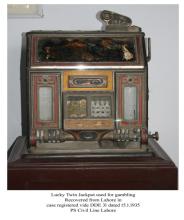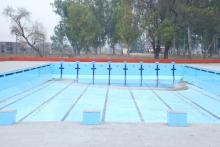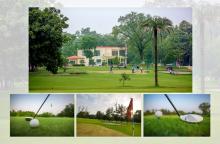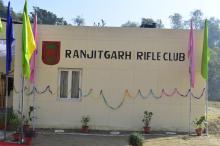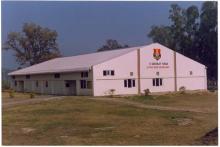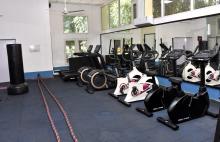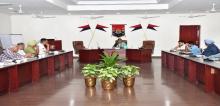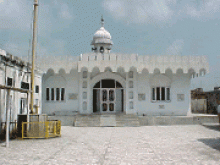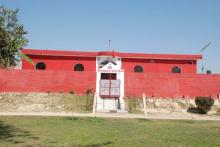The idea of setting up a police museum in the school building was first brought up by Mr. G. A. Rundle, Principal, in the year 1900 and a proposal was accordingly submitted to the Inspector General of Police (Punjab) vide Dispatch No. 650, dated 14th July, 1900 with a view to collect all types of articles falling under the category of criminal accessories i. e. tools and implements used by burglars, coiners and forgers, illicit distillers and opium manufacturers articles used by cattle poisoners, cattle thieves, card sharpers and gamblers etc, as well as different poisons used in human and cattle poisoning.
The aim was to give the trainees object lessons and to acquaint them with the appearances and uses of such articles which they were likely to come across during the course of investigations of various cases. The Sanction for setting up the museum was received from the Punjab Government vide circular No. 10/235, dated 24th July, 1901 and instructions were issued by the Inspector General of Police, Punjab through his letter No. 3626, dated 12th August, 1901 addressed to all District Superintendents of Police directing that all articles having educational value seized in criminal cases should be sent to the School after the cases were disposed off.
The Museum thus came into being in 1901 and continued to grow with the active assistance of District Superintendents of Police, in the Punjab, N.W.F.P. (West Pakistan), the neighboring princely states of the Punjab, the Assistant Inspector General of Police, North-Western Railway (now Northern Railway) and the Delhi State. This assistance though now limited to Punjab and the states affiliated with it for training purposes still continue. However, all concerned are reminded each year to keep on enriching the museum with articles of interest and educative value.
In the museum on display are some of the very old Police records in urdu script of the sixties of the 19th century which present a peek into the Police working of those days. Besides, there are some rare and old firearms, match locks and a numerous variety of weapons of offence like daggers, swords, spears, barchas, chhavis, belchas, clasp-knife, gupties, iron rods, dangs, takuas, kokhries etc. Various implements used to prepare counterfeit coins and currency notes like moulds, dies, crucibles, inks, paper rollers, pads, printing material etc and tools of burglary and thefts i.e. Sandhewas, kurakis, false key iron bars to force open doors, rods used to make holes in walls etc. Indian and foreign counterfeit currency notes and coins, old coins, an improvised cannon (used for terrorizing and demoralizing the public during the partition riots of 1947), unwieldy iron chains and fetters used for human torture, implements of gaming and betting, shoes of various patterns used in the district in the pre-partition days of Punjab, string woven chappals as used in neighboring hill areas, uniform articles of the U.P. Police, armed, executive and traffic Police, various other devices and equipment used for pilfering etc. and also various poisons are on display in the museum.
Visual acquaintance with and brief explanation of the above mentioned articles increases the awareness of the trainees as well as that of visitors to the museum. The modules on prevention and detection work done by the police in the Punjab, North-West Frontier Province (West Pakistan) and other places serves as a visual aid for their correct appreciation, by the police personnel.
The museum here serves as a place where not only the reconstruction of crimes is presented showing the preparatory work leading up to the crime but also a brief commentary which fully illustrates the factual and legal issues involved in the case is exhibited side by side.
The museum is housed in a spacious room in the Fort and the collections comprises about 500 exhibits which are arranged by period and by subject matter in the following sections:
1. Counterfeit coins and currency notes.
2. Weapons of Offence
3. Fire arms.
4. Tools and implements of burglary and theft.
5. Toxicology (Poisons).
6. Curios, Souvenirs and old police record.
7. Articles used for smuggling, pilfering and kidnapping.
8. Articles of gaming and betting.
9. Photographs of police martyrs.
10. Photographs and paintings of Punjab Police chiefs.
11. Photographs of the principals and Directors of the PTS/PTC and PPA Phillaur.
12. History of the Punjab Police uniforms through various Paintings.
13. Uniforms of the British Police & the Royal Canadian Mounted Police.
14. Police Medals
15. Police Badges of Ranks
16. Historic Photographs of Passing Out Parades, Visits by VIPs, training batches and members of the staff.
17. Famous Criminal Cases.
The fire arms section has recently been reorganized and is worth a visit. It shows different kinds of fire-arms from different countries and also houses some rare kind of fire arms.

